One silver lining about being injured (this is SBS): no chafing. Yet now I’m back among the running (I did 5 miles on Saturday!) just in time for sweaty summertime. Since it’s been a while, I need to remind myself about how chafing happens—and how to prevent it. Or, at least, minimize it. Join me on my refresher course!

Fitted workout wear is the way to go to prevent chub-rub.
Step #1: Stop chafing before it even starts. Pick your apparel wisely.
Stating the obvious here: Say no to cotton. You can likely sport a cotton/poly blend tee for a short, easy run, but on really hot days or longer runs, wicking, technical fabrics are your friends.
Once you’re in technical fabrics, realize that the fewer seams, the better. Smooth and simple, especially in sports bras and undies (read: near your most sensitive skin). Here are some of our favorite sports bras, while we love these running undies.
Once you’ve got the fabrics dialed in, time to get tight. As in, the more fitted your clothes, the better. (Trust me, a size 12 gal, the clothes that fit, rather than float, are more flattering.)
Start with running shorts with a longer inseam and/or a more compressive, form-fitting silhouette will discourage any chafe-causing “chatter” between your thighs. (Here’s a review of some of our favorite running shorts.)
For your upper half, find a bra that supports you 100%. Boobs don’t slide against each other, the whole package doesn’t shift substantially when you jump up and down. The ability to adjust both band width and shoulder strap height is key; you want to make sure you feel locked and loaded, as your chest will definitely accumulate sweat.
Wear a waist pack or arm band? Snug them up! They should also be tight and move as little as possible.
Finally, clip those tags! Nobody needs a back-of-the-neck “hickey” courtesy of your running tank.
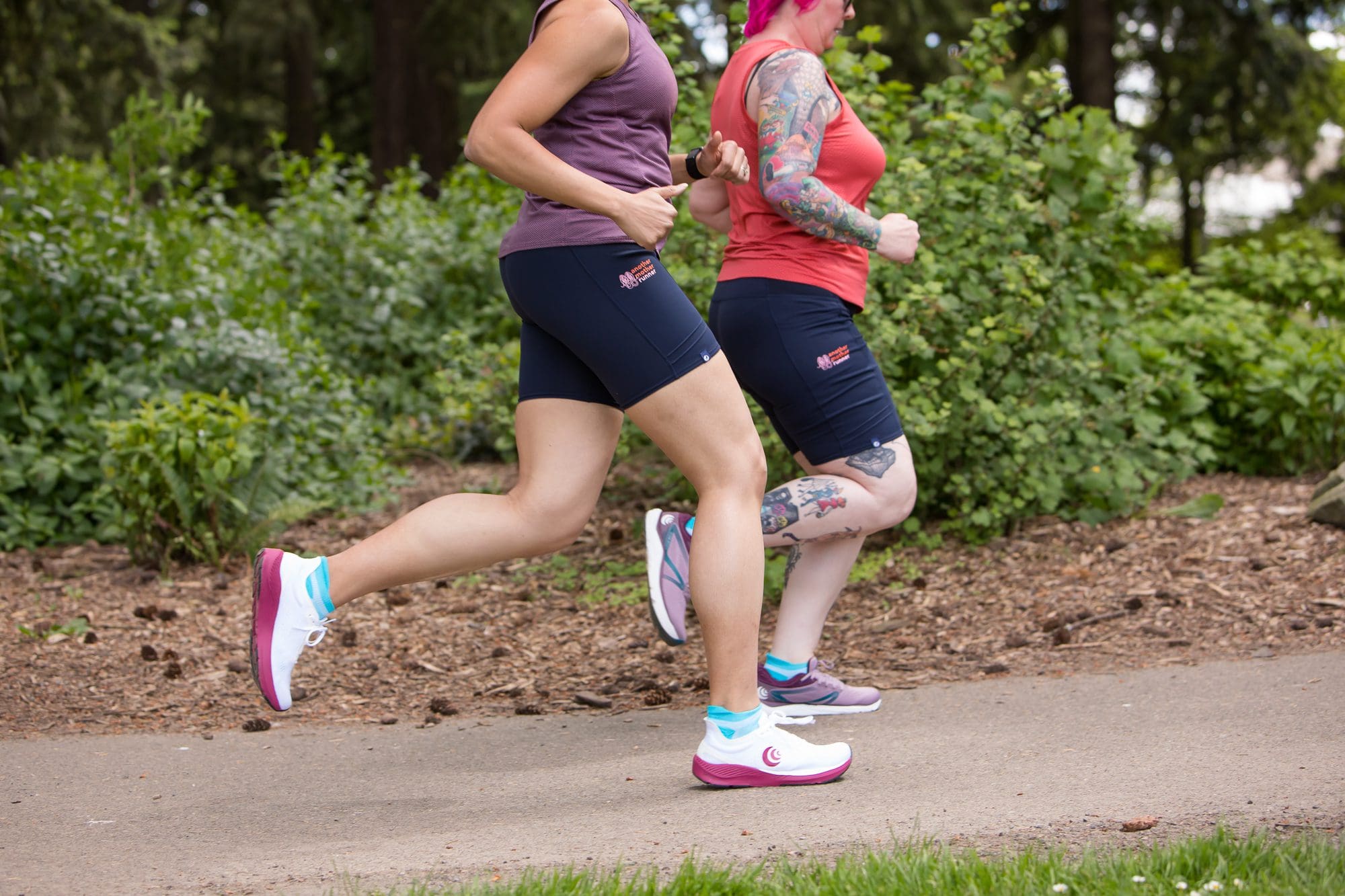
Silence the “chafe chatter” between your thighs with a longer inseam.
Step #2: Ease the chafing: Decrease the intensity of friction.
Even if you’ve picked your outfit with as much consideration as an Oscar-attending actor does, you still run the risk of chafing. Humidity increases chances of little red wounds, as does warm weather in general: The more you sweat, the better your chance of chafe.
There are plenty of choices for decreasing the friction of chafing. No matter what you choose, here’s our advice: Apply early and often. There’s a reason why marathon fans offer up DIY Vaseline applicators. If you’re running long, bring a little extra lube. You may not need it, but you’ll be really glad you have it if you do.
Crowdsourcing time: You all offered up some great ideas in this post.
“I use Shea Butter Vaseline under my bra straps and heart rate monitor straps. Works like a charm and much cheaper than Body Glide.” —Amanda H.
“None of the glides or topical anything works for me. I use a lot of strategically placed large Band-Aids.” —Anne O.
“A&D Ointment does wonders and it’s cheaper than most of the recommendations.” —Denée H.
“Chamois Butt’r. They also sell little 1 oz. packages that I put in my hydration vest pocket and reapply if needed during my run. It works much better for me than glide — and doesn’t leave grease stains like petroleum jelly.” —Nicole R.
“I recently tried KT Tape under my bra where it tends to chafe. It worked like a charm! Nothing else I’ve tried helped.” —Holly T.
“TRISLIDE anti-chafe spray! But spray it on outside — if you get it on your floor, it will be slippery literally for weeks.” —Roberta S.
“I don’t go on runs longer than six miles without 2Toms SportShield XTRA. It’s a lifesaver. I also rub it on my toes and heels to prevent blistering before longer runs. I’m a DD so I chafed HORRIBLY before I found this stuff.” —Aryn S.
“Dove Deodorant works so much better for me than the Body Glide.” —Sasha M.
“Before I have any chafing, I use Aquaphor. For summer long runs, if I’ve already gotten chafe-y, I tuck Spenco Second Skin into the strap of my bra to ease discomfort.” —Shayna D.
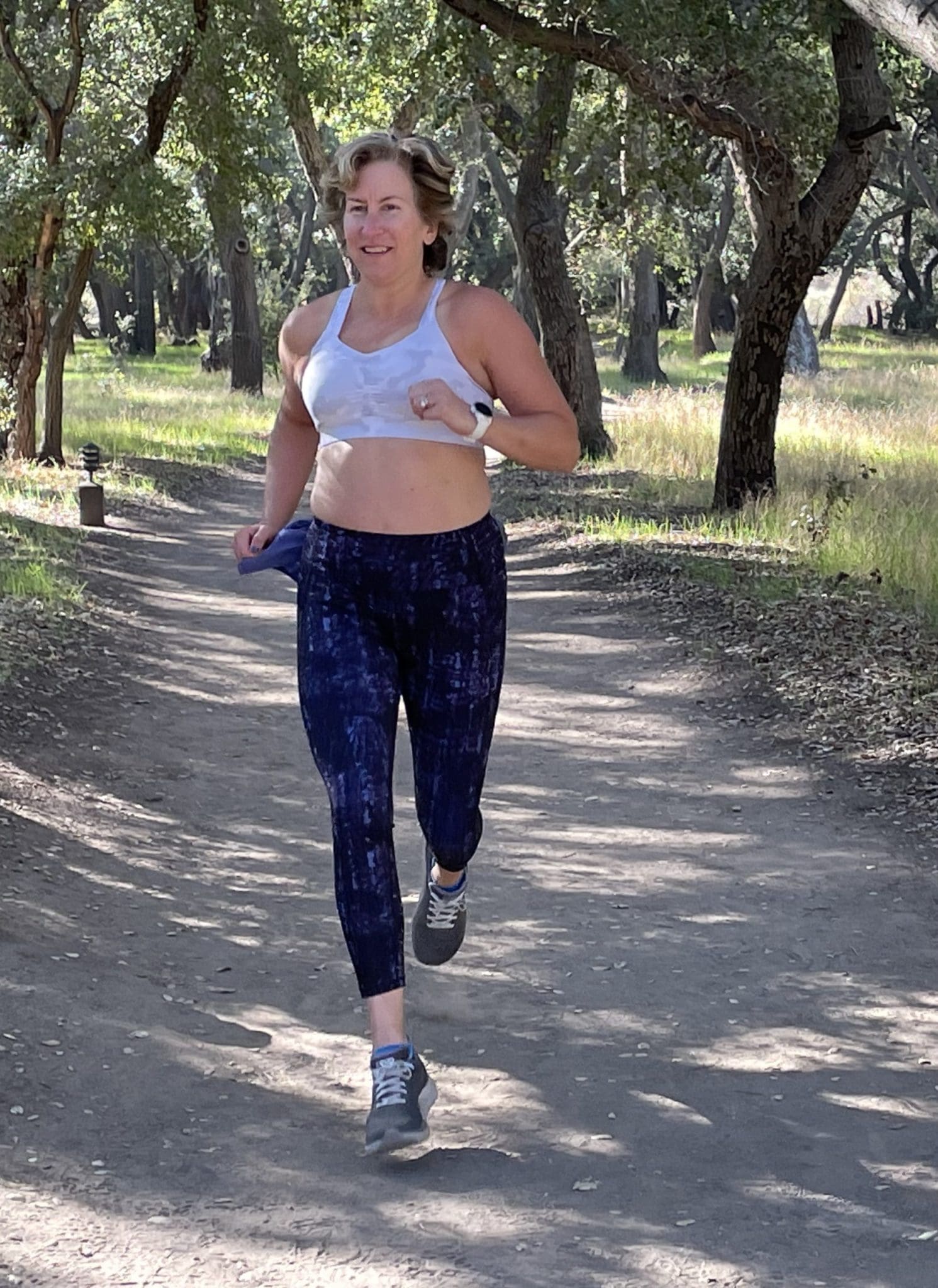
Bra-squad running means one less layer of clothing that chafes, yet more skin-on-skin contact.
Step #3: A BOGO chafing solution: Stay hydrated.
If you’re running on a hot and/or dry day, drink like you mean it. Staying hydrated doesn’t just help your performance: In arid climates like Colorado or Arizona, it also prevents your skin from developing sand-paper-like gritty feel that encourages chafing. When you drink regularly on the run, your sweat keeps pouring, which washes away the friction-causing salt on the surface of your skin.
Step #4: Ease the ouch.
If, despite your best efforts, you come home with a hot spot on your upper arm, on your chest, or between your thighs, treat it gently.
Start with a lukewarm shower: If you start with a steaming hot shower, you’ll run out of the shower faster than you did on your run! Gently clean the area, then pat it dry.
An antibacterial ointment like Desitin or Neosporin can speed healing. Looking for something more natural? Try aloe vera gel or coconut oil.


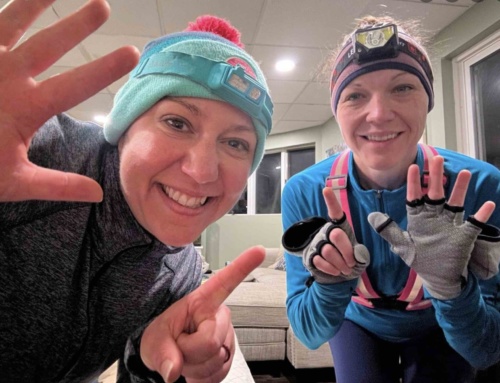

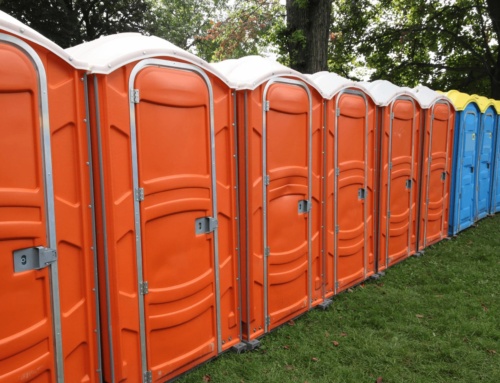
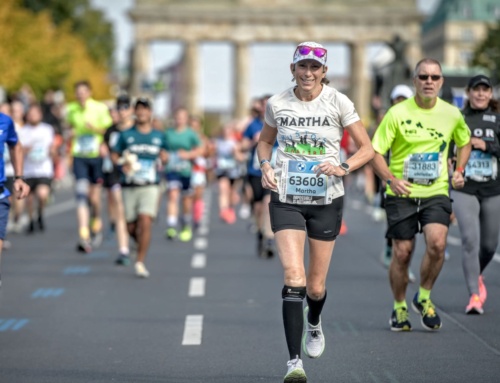
I love Monistat chafe relief gel! It goes on as a gel but then disappears into a powdery soft layer that lasts forever.